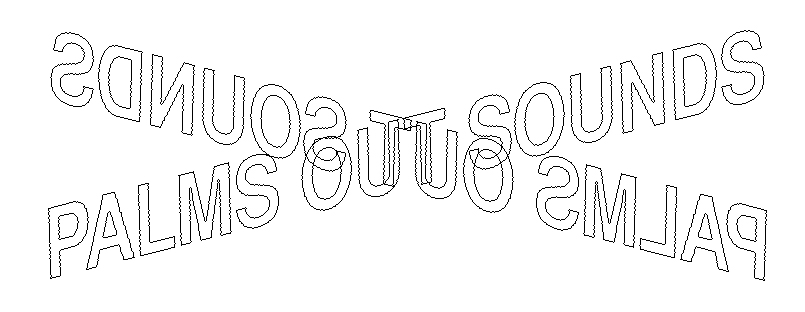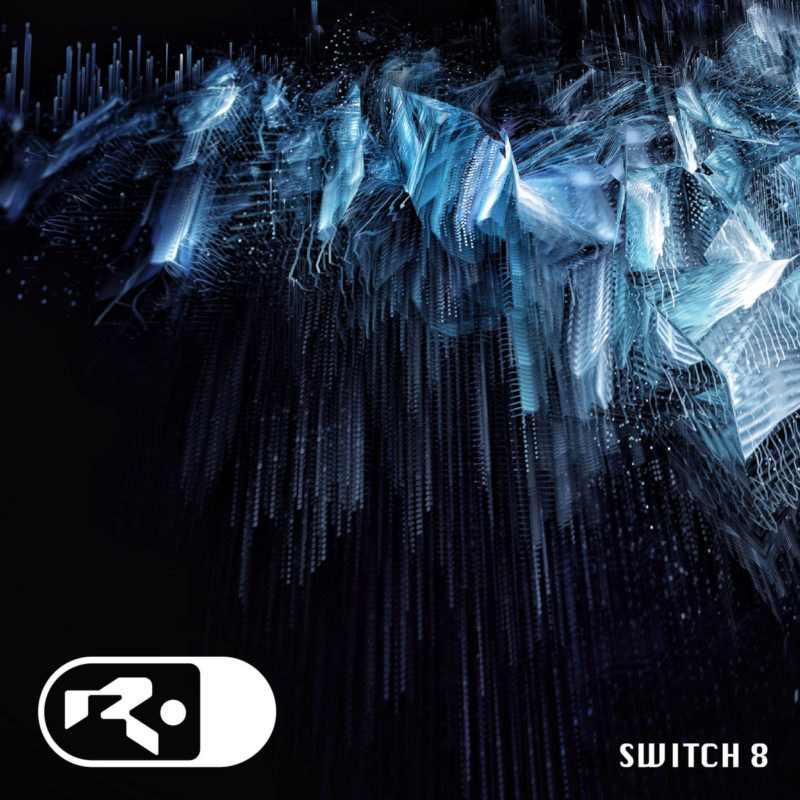
I consistently get the sense that Canadians are underappreciated as producers of electronic music. Sure, a few of them get plenty of well-deserved credit as the groundbreakers they are—looking at you Plastikman, Tiga, A-trak. And even in recent years, deserving folks like Kaytranada and Jacques Greene have made more than respectable careers for themselves. But I’m always amazed that for a country of only ~35 million people, there is such a high concentration of talent up there. This feels especially true with respect to technical prowess. A lot of the producers I run across from north of the border just have major fucking chops.
RiDylan (real name Dylan Gauthier) is one of those producers. For well over a decade, he’s been releasing music that lives somewhere in the universe between breakcore, jungle, acid, and glitch. Notably, in 2019 he released what appears to have been the next-to-final record on Jason Forrest’s Cock Rock Disco imprint–a real brain-melter collection of fucked up ravey junglism (check that release here).
Gauthier’s latest release, a five-track EP called Switch 8, still exists in the universe he’s inhabited over the years, but some of the ebullient rave chaos of past releases has been replaced by more of an icy refinement. This is exemplified by a song like “Eternal Minutes” — a stripped-back 150+bpm electro number with tightly EQ’d drums underpinning a bitcrushed acid bassline and a meandering glassy sine wave pattern–who knew a bitcrusher could be used so carefully? The record’s opener, “Balaclava Clouds” also demonstrates how Gauthier is saying something new using familiar tools. The amen break reprogramming is as detailed and complicated as anything he’s produced in the past, but instead of piling mayhem atop the sturm und drang, here the 303 isn’t much more than a single triplet squelch that automates in and out of audibility. Save for the breakbeat kaleidoscope and minimalist acid licks, the track is just a huge cloud of bells and pads. These may sound like simple changes to have made, but capitalizing on the contrast of these disparate elements–and delivering each with such care–ends up functioning as an effective way to communicate a set of nuanced emotions instead of just fire and brimstone or all-out-rave.
The other three songs on the record are admittedly more reminiscent of Gauthier’s breakcore past–including an absolutely frenzied remix to close out the record by Osaka legend Laxenanchaos. But despite all the breakbeat havoc, these last three still demonstrate an evolution. Even the Laxenanchaous remix elegantly winds itself down in the final minute of the EP from disarray to relative simplicity, ending with a few seconds of what sounds like a field recording of children playing on the street, set to a Vangelis score.
Gauthier is making music as energetic as ever, but his palette–both sonically and emotionally–is expanding to include subtler shades between all of the primaries.
RiDylan – “Balaclava Cloud” (bc)
RiDylan – “Eternal Minutes” (bc)
RiDylan – Turbocide (Laxenanchaos Remix) (bc)
(Expand)
This review was written in support of the artist’s promotional campaign.
Alfa Cornae – Takeshi
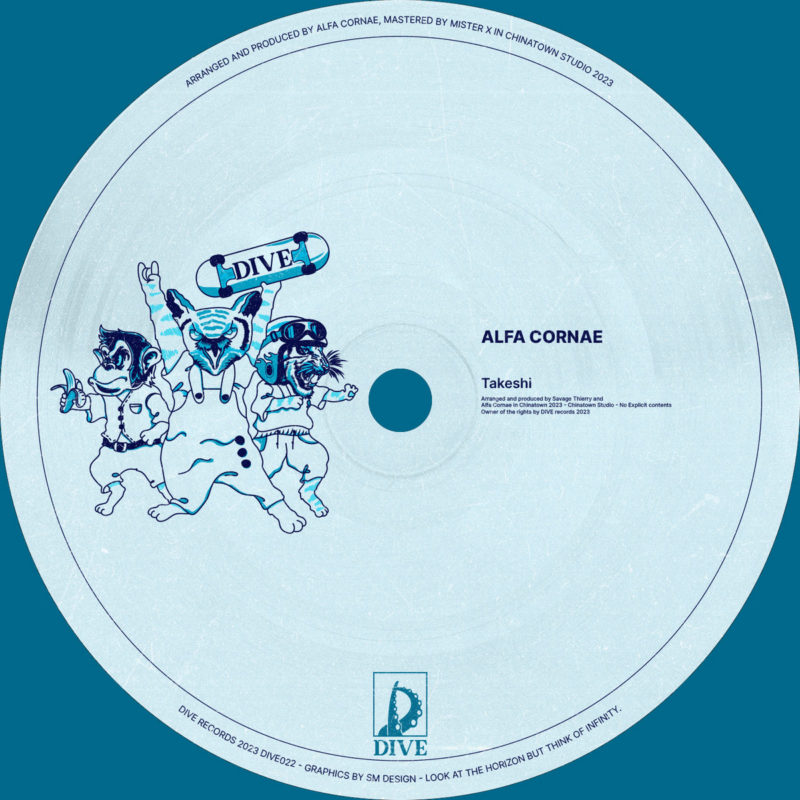
Exuberant muscular g-house from Alfa Cornae–one pseduonym of Italian genre chameleon Marco Dassi–out last week on Dive Records. Bass go wonk wonk fast.
Also sharing the fittingly titled “Muscle Protein”–released earlier this year on Flash Mob. This one tastes a bit more of jacked up motor oil from the garridge, or I guess maybe that’s just a new protein powder flavor.
Both proper strong dance floor tools. Grab both on bandcamp or stream on your outlet of choice if you just want to dance at home or during your commute.
Alfa Cornae – “Takeshi” (bc)
Alfa Cornae – “Muscle Protein” (bc)
Visual Velcro 20
Max Cooper – “Forgotten Places” ft. Kathrin deBoer (bc)
Pari Eskandari – “Chador” (bc)
Benson Taylor & James Adrian Brown – “Church Of First” (bc)
Mailbox: MangoMangoMango – Body
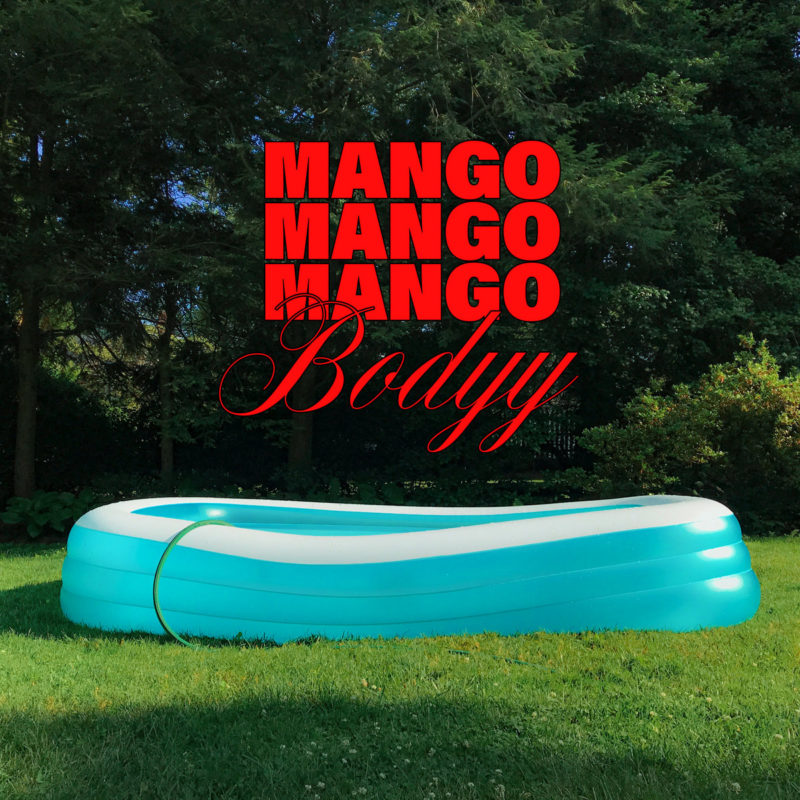
I’m having a great time. I’m in love with my body.
MangoMangoMango is Chicago-based Tanner Uselmann. After years of playing guitar in bands in Minneapolis, his move to Chicago was accompanied by a shift towards self-produced electronic music. (Chicago’s a good place for that.) He released his first record as MangoMangoMango in 2021, but this one is the first from a new batch of songs he’s getting ready to release in 2024. I know we tend towards the darker on this site, but there’s always room for this kind of self affirmation. It’s hard to love yourself. But bodies are just as fucking cool and gorgeous as they can be woefully complicated, and that should be celebrated. Apropos, my two-year-old daughter Iris told me today: “Iris loves Iris,” and I couldn’t have been prouder.
Grab “Body” for free on bandcamp, or stream it wherever. And look out for more from Uselmann in the new year.
MangoMangoMango – Body (bc)
Vromm – Horizon

Hi-res shattered breakbeat from London-based Vromm. From the plainest of square waves into twisted mutant orchestral jazz storms and through the inverse thunderclaps of an hyperreal cirrus cloud pattern. The title of this song is fitting, this is music for the sky.
Out now for purchase on bandcamp or stream it all over.
Vromm – “Horizon” (sc)
Solbore – Seemingly Magic Things
Tectonic plates move because they’re dragged along as the molten mantle flows beneath them. The mantle flows because of convection currents created by the heat of the Earth’s core. The earth’s core is hot because it’s full of radioactive elements in a state of perpetual decay.
If the first half of this song sounds like anything identifiable, it’s probably some part of that process. Maybe the crush of the plates colliding; or the drag as they slip off the mantle; or the hyper-rapid boil of the heavy metals in the core; or maybe the embodiment of decay itself. After three minutes of all that heat, the song gives way to a kobyz solo that feels like water pouring into the tectonic gash, eventually petering off like steam disappearing into the atmosphere.
From Brighton-based Czech/Argentinian producer Solbore, from his yet-released album, Never Alone, Often Lonely (out in Febrary). I’ve also selected another prerelease piece that features one of my favorite artists of the past few years, Varsity Star (I wrote about him last year)–a much sweeter affair, but no less compelling.
Preorder Never Alone, Often Lonely on bandcamp, or stream the singles all over.
Solbore – “Seemingly Magic Things” ft. Inwards, Neil Cosgrove, Lachlan R. Dale, Nurbolat Kadyrbayev (bc)
Solbore – “Back in Time” ft. Varsity Star (bc)
Mailbox: Ainonow – Exile
Ainonow, real name Kyle Kroeck, is a Boston-based artist seeking to provide catharsis to his listeners. He aims to do this through razor-precise sound design at high tempos. He says he wants his music to allow listeners to embrace their dark sides–recognizing that darkness is part of being human–meanwhile providing a healthy and comforting space to channel those feelings. It’s not so often you hear this kind of emotional ambition from an artist working at the harder fringes of stateside Drum & Bass. And I’ll admit, I’m overall pretty cautious about dipping my toes into the vat of US bass music that includes Neuro, Mainline, and US-breaks. That stuff has just never been my bag. Above 160bpm, I’m just usually far more partial to the UK stuff: the grit and tangle of Jungle, the silkiness of old school Liquid.
But credit where credit is due, Ainonow is using some of the conventions of those US sub-genres to make something truly refined. This is incredibly intricately programmed music, with an impressive amount of patience and a refreshing lack of reliance on the standard build up+drop+breakdown/repeat structure. This is without doubt music for the dancefloor, but for all that the basslines may growl, they never stay in one place for long or quite repeat themselves. And those drums sound less like the lonely loopy staccato of typical D&B drum programming, and more as if someone spiked a marching band’s gatorade with adderall and convinced them the floor was lava. It’s refreshing to hear this level of thoughtful experimentation in this kind of packaging, especially from a producer so clearly concerned about how his music affects people emotionally. Big pad breakdowns, 90s nostalgia, ePiC dRoPs, and massive over-compression aren’t the only ways for an American bass music producer to coax strong feelings from people, and Ainonow is evidence of that.
Ainonow is current with two-tracker Exile. Grab it on bandcamp for free, or steam it on your outlet of choice.
Ainonow – “Exile” (sc)
(Expand)
This review was written in support of the artist’s promotional campaign.
Bonsi – Four Faces

All I need is to be where I wasn’t
Bristol-based producer and vocalist bonsi is current with this arresting new single, her first solo work since her 2020 album Sustain (there was a great collaboration with Harvey Causon in 2021 that I’m also sharing below).
Clocking in at just over two and a half minutes, “Four Faces” is minimalist both compositionally and temporally, but it’s rich nonetheless. There are plenty of checkbox elements: found-sound rattles and scrapes, truncated sliding organ licks, hollowed-out bass stabs, all anchored by a nice sludgy kick rhythm. But it’s bonsi’s vocals that shine here. Instead of succumbing to the temptation to soak a pretty vocal like this in reverb, they’re just the right amount of dry, which gives them an immediacy; like someone singing to themselves at the bus stop or under an umbrella walking across town. Combined with a set of occasional up-and-down-pitched backing vocals, that immediacy takes on an almost dissociative quality, as if bonsi is right here next to you, but also slipping down a storm drain or up a chimney.
Grab the single on bandcamp or stream it all over.
bonsi – “Four Faces” (bc)
bonsi – “Mouth of Shame” ft. Harvey Causon (bc)
Mailbox: Amy Godsey – Ananta
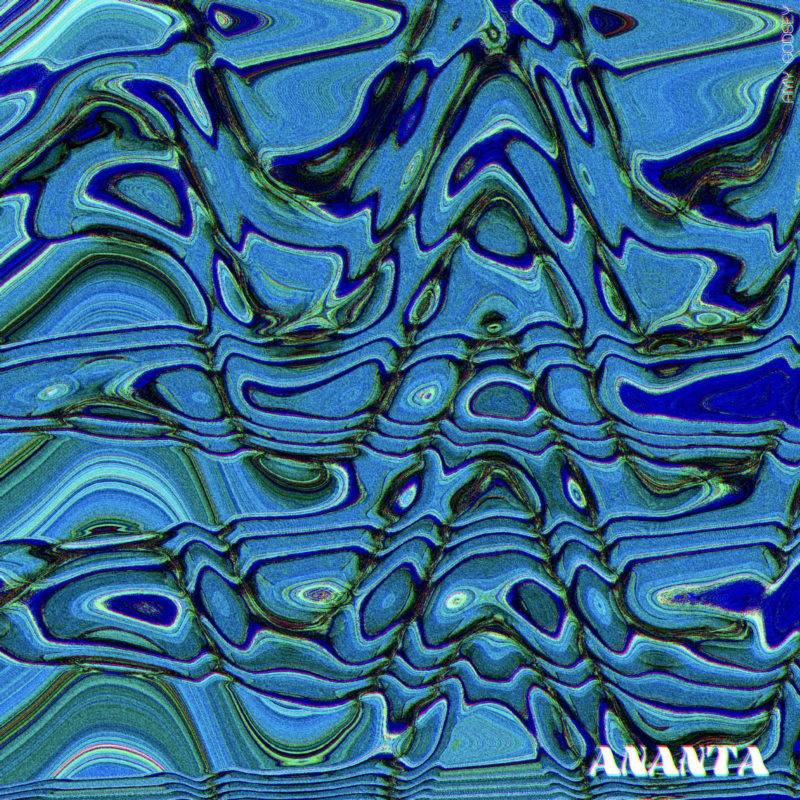
In pursuit of expressing and preserving nature
Amy Godsey is a musician and apparel designer currently based in Los Angeles. Her latest album Ananta was written in the wake of loss: her best friend died, COVID exploded, and she left New York with just a suitcase and “no plans except to head west.” Despite the tumult of a time like that, Ananta isn’t sad or even what I’d call an exploration of grief exactly, but it does seem to reflect what Godsey was experiencing in its emotional ambivalence. It has an aimless quality about it, as if it was made as a cautious exercise in exploring newly available freedom. Songs and titles like “No Plans” address this notion most squarely, but a song like “Should I Meet You” expresses this peregrination best through a gently bubbling tomtom pattern that you can never quite catch hold of, sitting safely under a constantly undulating harp that keeps intersecting itself and occasionally collapses under the weight of its delay. Godsey is following her nose, letting the process dictate the result.
Ananta has its more straightforward moments too, no doubt; songs like “Mental Vibrations” and “Heartless in the Sea” rest on grounded drum machine patterns and riffs that feel familiar. But Godsey seems most lucid when she lets down these guardrails and allows the mess to spill out more. The album is strongest at its most meandering.
That’s not to say this is messy music; to the contrary, it’s meticulous music that–despite its reliance on electronic instruments–seems intended to address nature, both floral and faunal (and human). Nature is chaotic too, for all its perfection and beauty. This dichotomy is reflected on a song like “Windy”, which vacillates between breezy cascades of sine waves and the near-disconcerting babble of what sounds sort of like a digital didgeridoo. This subject matter is no coincidence. When Godsey left New York, she didn’t land in LA right away. The album was written while she was nomadic, living alone surrounded by wilderness. Ananta bottles some of the inspiration and serenity of that kind of setting, but also some of its danger. It’s freeing to breathe in cold forest air, but there are beasts out there too.
Amy Godsey – “Windy” (bc)
Amy Godsey – “Heartless in the Sea” (bc)
(Expand)
This review was written in support of the artist’s promotional campaign.
Big Dope P – Pop My Shit ft. NaylahDMP
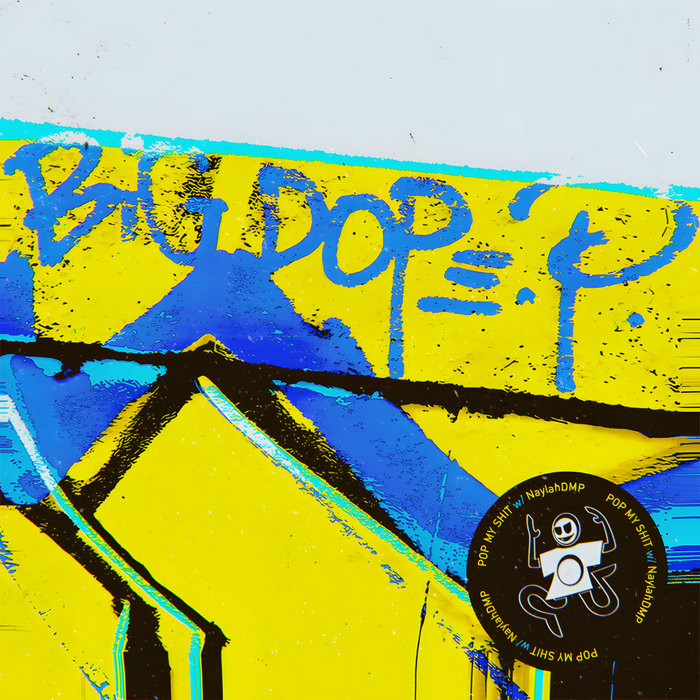
Brilliant 160bpm stutter g-tech from the ever-prolific London-based Parisian, Big Dope P. I’m not sure who NaylahDMP is, but she’s not wrong when she says she’s doing top notch shit. Moveltraxx and Doppie remain as strong as ever.
Grab this on bandcamp and play it out loud. Or stream it at home wherever you do that. Just don’t do it seated.
Big Dope P – “Pop My Shit” ft. NaylahDMP (bc)
Mailbox: Fritz Kalkbrenner – “Set You Free”

You might recognize Berliner Fritz Kalkbrenner from his numerous features on early-aughts Sascha Funke records on BPitch, though many of those were officially uncredited. Kalkbrenner appears to have had a very healthy career since then, though mostly in a more progressive and mainstream vocal house and techno space than I tend to enjoy. Nonetheless, he’s current with a song that steps wholeheartedly into the warmer side of German house traditions, evocative somewhat of an older Henrik Schwartz record. That’s high praise from me.
No bandcamp for this, but you can find it on all the usual streaming outlets. Or if you want to play it out, grab the file on beatport.
Fritz Kalkbrenner – “Set You Free” (sc)
Mailbox: Dawn Chorus – Parallel Realities

You might be familiar with the concept of a dawn chorus — the euphony caused by birds’ morning mating and flock return calls. It’s also a term that refers to a naturally occurring electromagnetic phenomenon that occurs shortly after sunrise as a result of energized electrons entering into the inner magnetosphere, which–when converted into audio–sounds an awful lot like the avian dawn chorus.
Perhaps the natural similarity of these homonymous concepts, and their shared pleasance, make the concept ripe for exploration by musicians. Indeed some fabulous ones have dedicated songs and albums to the idea (e.g., Jacques Greene, Boards of Canada, Thom Yorke, Jon Hopkins, Beth Orton, to name just a few). But Greg Jung, a producer based in Baltimore, has made the Dawn Chorus his name. According to Jung, the project is a celebration of a sense of newly opened doors following several years of self-doubt and writer’s block. It’s fitting, then, that the project is named after two of nature’s early morning rebirth cycles.
The song that speaks most directly to this sense of a.m. optimism is fittingly titled “Sunbeams” — a skittering wake up call that rests on pillowy pads. That song, as well as the lead single “Changes,” and ultimately all of Jung’s new EP, Parallel Realities, definitely shares stylistic references with the other artists mentioned above who have also been fascinated by the concept of the dawn chorus. Particularly, you’ll hear the instant nostalgia of BoC-style tape warble throughout, and a reasonable dose of jagged Yorke-influenced drum programming. A respectable, if early, rebirth for an artist who claims to never have really let himself open up until now. We should all try to muster the courage to spread our wings and join the chorus.
Parallel Realities is the new EP from Dawn Chorus. Purchase it on bandcamp. “Changes” is also available separately for download as a pay-what-you-wish.
Dawn Chorus – “Sunbeams” (bc)
Dawn Chorus – “Changes” (bc)
(Expand)
This review was written in support of the artist’s promotional campaign.
Visual Velcro 19
L E M F R E C K – “U Gd? (GOD/GOOD)”
El Búho – “Cenizas de Agua” ft. Nita
Mailbox: Ear Mind Eye – Onism

One of the first posts I wrote after returning to this site post-decade-long-hiatus was about how nice it can be to encounter artists who long to hear more of one of their hero’s signature style so much they are willing to fully embrace reviving that style themselves. These artists are practicing a form of nostalgic manifestation that I can’t help but respect. It’s especially not fair to deride them as copycats if the artist’s style in question has been abandoned. They miss hearing new work by artists who are no longer productive (or exist in a new form altogether), so they put in the work necessary to manifest those unwritten songs’ existence. I know it might sound silly, but I think these dedicated emulators are doing the rest of us fans a true service.
Last time, I wrote about the Boards of Canada tribute album by members of the Kahvi Collective. There, it was a bunch of artists doing their best to summon the spirit of BoC. In this case, it’s one artist essentially imagining a sequel track to Aphex Twin’s breakthrough song, “On”. I hope Ear Mind Eye, an artist from Canberra, Australia, doesn’t mind me framing it this way, but I don’t say any of this as a slight. Richard D James’s style in the early 90s was deceptively simple. It’s easy enough to put all of the elements he was working with together in a pot, but it’s another thing altogether to bottle even a fraction of the lightning James did around that time. He isn’t going to return to making music in the style he was pursuing back then–despite his generosity in giving us so much new work after so long–so we should be thankful to the devotees who are willing to try. In this case Ear Mind Eye makes a noble attempt.
Grab the track on bandcamp, as part of the Instant Slack EP. Or find it on your local streaming service.
Ear Mind Eye – “Onism” (bc)
Mailbox: FVLCRVM – Till
I’ll be honest, I’m usually really turned off when I see an all-caps artist name with a V used in place of a U (or similar conventions like skipping all the vowels or whatever), but it just so happens that my father was in Bratislava for the last couple of weeks teaching a course at the Uni there, so I overcame my bias and checked the submission when I saw the Slovakian connection. I’m really glad I did. Bratislava-based FVLCRVM is the kind of artist who–at least from the outside looking in–seems like he’s drawing from a really deep well of natural talent and innate energy. As I mentioned the other day, I’m also a little dubious about stuff people label as hyperpop (to his credit I haven’t seen FVLCRVM himself use that term, but I’ve seen others do it). In this case, that label is really reductive. For one thing, a browse through FVLCRVM’s back catalog reveals a pretty broad stylistic approach, but also what makes these songs good is really the songwriting, not the packaging. This is just solid pop music, as far as I’m concerned, so it’s no real wonder that his work remains good across his genre shifts over time.
I’ve selected two tracks for you, but I recommend checking all his previous work too. And if you couldn’t tell how much I like the first song, I’m posting it despite the fact the only public embeddable version is a youtube stream. It takes a lot for me to get over my fastidiousness when writing here, but “Till”–released a few weeks ago on a major label (that’s why there’s no proper public stream available)–is truly jubilant 90s breakbeat revival pop. It’s simply sparkly enough for me to just get over myself and post it anyway. Definitely do yourself a favor and listen through until that key shift around 2:30. The second one, “Wildfire”, is about a year old, and as good as the first, but is also a good example of FVLCRVM’s genre-chameleon quality. It’s hazier and warmer–almost grunge music at times–but it’s no less of an earworm, and still somehow open and energetic despite all of its warble. I suspect it’s only a matter of time before we see a top40 hit stateside written by this guy (if we haven’t already…?).
FVLCRVM – “Till” (yt) stream above
FVLCRVM – “Wildfire” (sc)
Mailbox: Sound of Fractures – Willow’s Heartbeat
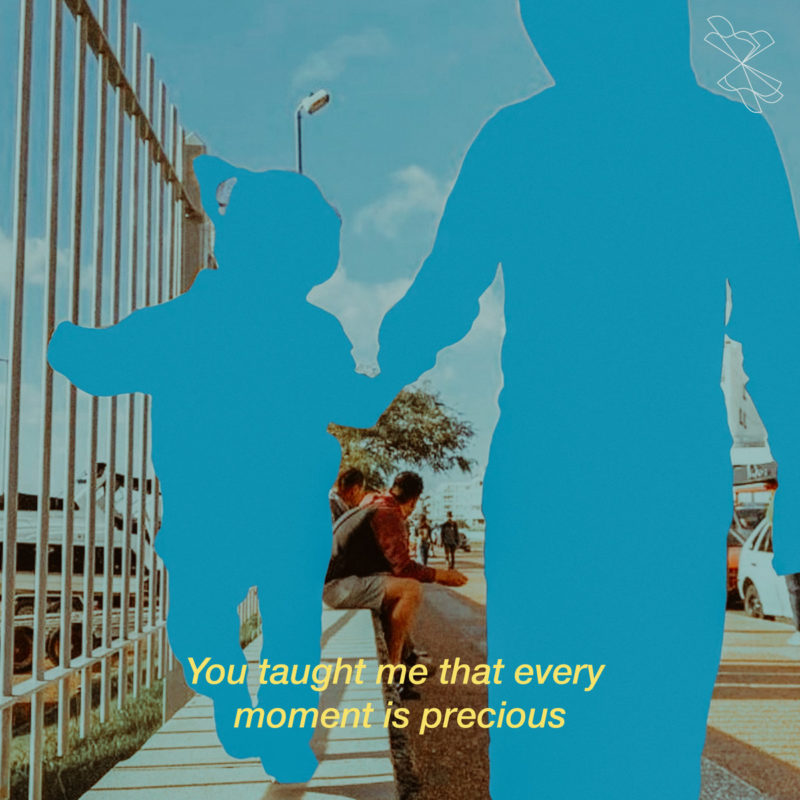
Those early scans can be a terrifying time, you are a bundle of nerves and heading into this great big unknown, and there is something so visceral about hearing that living heartbeat the first time. It’s one of those life moments where you are overwhelmed by emotions that you don’t quite understand, and yet you are also scared to let yourself feel them in case something goes wrong.
That nice sweet sort of sentimentality on this track from North London’s Sound of Fractures, real name Jamie Reddington. This song was built around a recording Reddington made of his daughter’s heartbeat in utero. Hearing my daughter’s heartbeat gave me the same kind of combination of feelings. Wild excitement and anticipation, coupled with an instinct to hold it all in as much as possible. Both out of fear of the worst, but also a sort of self-doubt–because you no have real idea what you’re about to experience or whether you’ll be able to handle it when it happens. But it turned out that I was. If you’re in that spot, the mere fact you’re wondering those things about yourself and your baby means you probably will be too.
The track is out now on bandcamp and streaming. Also check another nice one from Sound of Fractures released early this year.
Sound of Fractures – “Willow’s Heartbeat” (bc)
Sound of Fractures – “Let Go” (bc)
Mailbox: darkDARK – Ghost Complex
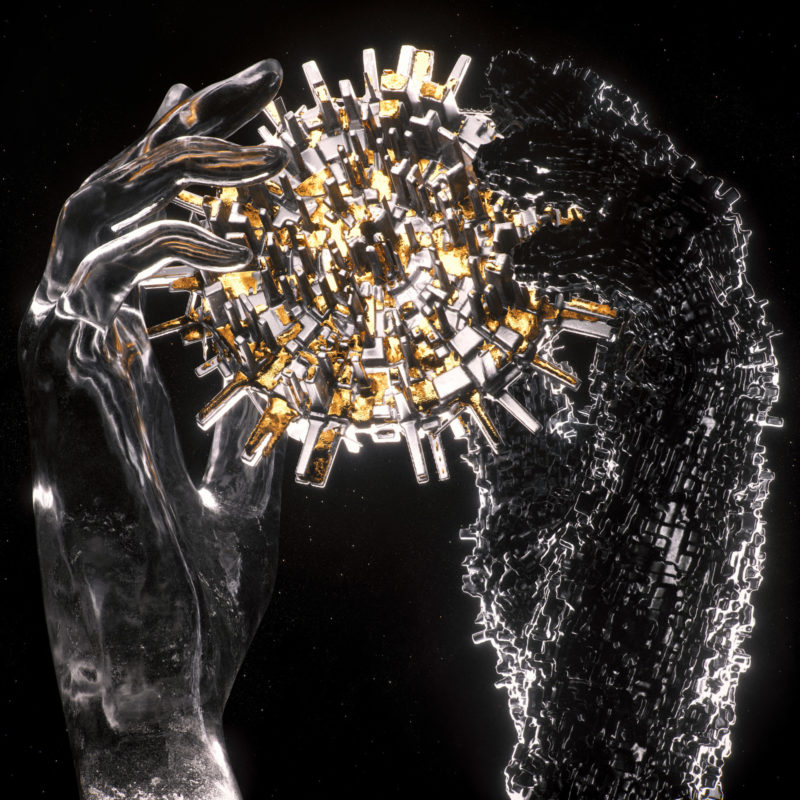
darkDARK is Genevieve Vincent and Chris James, the former based in LA, the latter in Austin.
Ghost Complex is their latest album, a sci-fi concept record about a pair of AI living in a post-human world, grappling with the choice between creation and replication, forced to confront the ambiguity of sentience. Humans left them a set of songs, designed as fables, so that the pair might recreate civilization in humanity’s image. The central question is whether will they accept their role as custodians of the past or choose to become architects of their own future?
Societal AI OD aside, this is a resonant question for us humans too. Do we use our energy to focus on doing something truly original, or do we accept we are products of our influences and make the most of that? I live primarily in the second camp. I expect Vincent and James do too. The album is delicate and beautiful, but also doesn’t seem to shy away from honoring its stylistic inspiration. Getting too specific with genre or reference points–when we’re ultimately dealing with pop music–is maybe a touch superfluous, but for me, Ghost Complex sits somewhere between the gauzy UK and Scandinavian trip-pop of the late 90s and early aughts, and a minimalist strain of blade runner revivalism; plus probably also with a dose of the graceful quality of a record like Chairlift’s Moth.
Notwithstanding the satisfying chunk of the bass on songs like “Cult” and “Petals”, darkDARK are best at their most gossamer. Album opener “Face With No Name” is the one that gets me the best. Vincent’s vocal delivery skips over the air, playing carefully with the bed of Rhodes beneath it. The shared fx on both elements automates exquisitely until you’re not quite sure what’s what. It’s all nicely suggestive of the album’s concept of a pair of machines wondering whether to emulate or separate from humans.
This is high-concept stuff, sure, but far more importantly, the album is really easy on the ears. No bandcamp for this, unfortunately, so go find it on streaming services.
darkDARK – “Face With No Name” (sc)
darkDARK – “Cult” (sc)
darkDARK – “We Had Everything” (sc)
(Expand)
This review was written in support of the artist’s promotional campaign.
True Faith / Final Cut – Take Me Away (Pinned Up Mix) (1990)
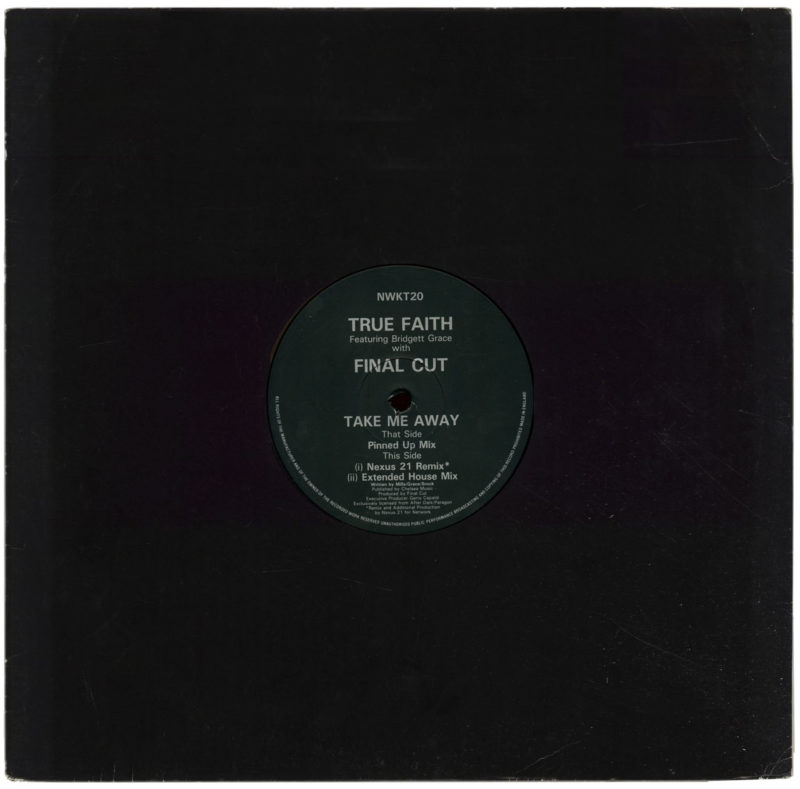
This is one of those songs that has so many different versions, and so many people associated with it, that no one ever seems to agree on its provenance or exact history. Some versions list the primary artist as True Faith, others as Bridgette Grace–I think True Faith was intended to be Grace’s artist name before the song was briefly picked up by Atlantic and Polydor, who both evidently preferred Grace use her real name. Others still list Final Cut as the primary artist–sometimes presenting or featuring or with True Faith. Final Cut was a production duo composed of one Jeff Mills and a fellow Michigander named Anthony Srock; later, it was Srock and various others after Mills left to focus on solo work and Underground Resistance. Even the names of the songwriters and performers are often misspelled. Srock is often spelled “Stock”, and Grace’s first name is spelled every which way possible (I believe the correct spelling is actually “Bridget” and she’s often not credited as a songwriter at all.) I haven’t seen Mills get skipped or misspelled, go figure.
I suppose only Srock and Mills would be able to say for sure how exactly the timeline of the song took shape, but for all I know, they might not agree with each other, and maybe Bridget Grace would have a different story too. Maybe all the confusion is the reason why many of the original and best versions of the song are out of print. In 2012, Anthony Srock uploaded a kind of strange compilation of relatively current remixes (including that Prodigy song that samples Grace’s vocals) under the name AsRock. That compilation does indeed include a version titled “(Original Mix)”, which I suspect is in fact the first version produced. But it’s still not the version I think of as my original.
The version that hits closest to my heart is a five-minute-fifty-second uncredited “Pinned Up Mix” from 1990 on Network Records (who appear to have owned the UK/Euro distribution rights by the end of 1989/early 1990) which featured prominent use of the Hot Pants break and various liberally sampled elements of Kevin Saunderson’s “Definition of Love” release as Kaos.
The “Pinned Up” tag refers to the Pin Up Girls, who discogs tells me is Paul Waller. (Waller later worked on Björk’s Debut, among other important records throughout the 90s and beyond.) This mix was likely derived from a shorter version released a few months earlier as an original by the Pin Up Girls on a bootleg 12″ on Soft Records, which was then rebranded as a remix and released on Network (and some continental labels too). The label notes of one release claims that True Faith and Final Cut are the Pin Up Girls, but that doesn’t feel right to me. There are also other Pin Up Girls versions floating around. (One other contender for the best is a version very similar to this one that clocks in a minute or two longer.) Based on the prominent reliance on a breakbeat, and the sampling of Kaos (it’s almost a mashup), I’ll bet Waller probably produced the first initially as a bootleg using the acapella from one of the first 12″s, and then redid his version later in various incarnations on license back to Network and other labels.
I could have a lot of this backwards or plain wrong, but this is all my best attempt at unraveling this historical rat’s nest. The Quietus reviewed the reissue of Final Cut’s Deep Into the Cut, their only album released while Mills was still a member, which provides a bunch of great context, but unfortunately doesn’t address “Take Me Away” at all. Still a good read, and a great album.
For whatever reason, you can buy digital copies of a bunch of the song’s versions, but I don’t think you can buy this one, even though it’s the best one. At least I haven’t been able to find it. Maybe it’s that Saunderson sample preventing release, or maybe no one’s on the ball. Who knows. So I’m sharing a vinyl rip here. If you’ve got the scoop on the deeper history of this song, I’d love to hear it.
True Faith / Final Cut – “Take Me Away” (Pinned Up Mix) (1990) (mp3)
Mailbox: Graffick – Spectra

Graffick (real name Blaine Counter) is a San Diego-based producer who sent me this lovely tune last week. According to Counter, the Graffick project was born in the wake of a near-fatal semi truck accident that left him unable to walk for months. Yeesh, respect to him for doing anything after that kind of trauma. As far as I can tell, most of the Graffick back catalog sits at lower tempos than the instant track, which is a nice slice of bell-driven, live-drum-kit organic house. Really well put together stuff here.
No bandcamp here, so find the track on streaming services instead.
Graffick – “Spectra” (sc)
Mailbox: Shidi Midi – Glitter District
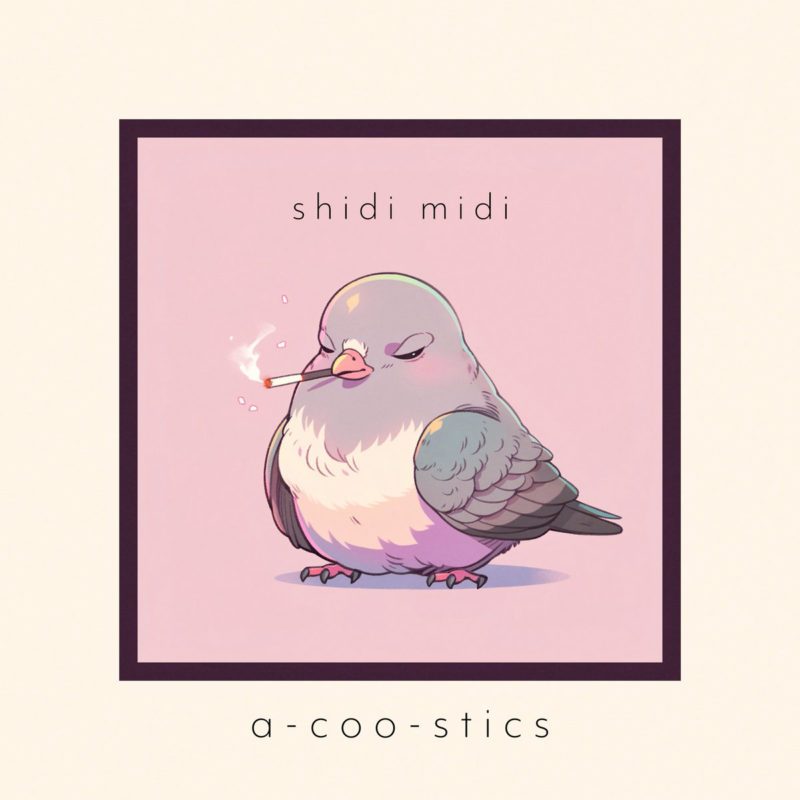
A handful of glimmering submissions from Chicago-based Shidi Midi.
I’ll readily admit that when hyperpop became ubiquitous in the mid-2010s, I was never quite able to fully grasp its appeal. Not that I couldn’t appreciate the intensity of its production, or even its plastic-obsessed aesthetic–but I think coming from a time and place where gabber kicks were the antithesis of cool, I just couldn’t quite stomach all of it as well as some of my friends. But I like where it’s gone, or at least what it left in its wake. I appreciate the ease with which the stylistic merging of dance music and video-game retrophilia has become commonplace; and I really like how many artists that might have been termed hyperpop five or ten years ago, are now just as easily embracing jungle and breakcore references over 150bpm+ gabber 4×4. It’s become embodying of exactly the kind of musical free-for-all that I’ve always sternly believed breeds real creativity.
Shidi Midi is one shining example of the class of artists working in that space. Their work seems as unencumbered by genre as it is proudly technicolor. I’ve selected a few good ones here — the first is the opener of their newest EP a-coo-stics; the second the closer of their album Birdhouse, released earlier this year; the last, an hilarious choice cut I discovered on their soundcloud that was an immediate winner in my book.
Shidi Midi – “glitter district” (bc)
Shidi Midi – “Chu Chu Rocket” (bc)
Shidi Midi – “The Jetscooby Yogistones” (sc)
Mailbox: Hot Spoon, Cold Mango – Paws on Ears
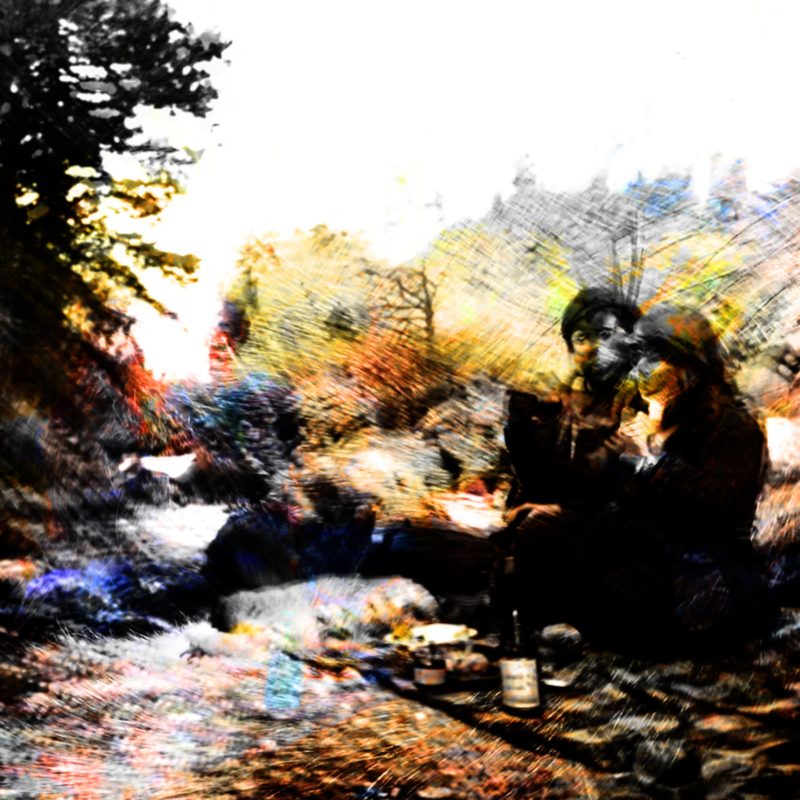
Sometime about 20,000 years ago, a wiry-haired and very hungry pack of descendants of the Miacis decided collectively that they should brave a plea for help from those strange smooth creatures with the strong rumps and weak shoulders. They’d been following these hairless beasts for some time, subsisting on what was left behind in or near piles of burning embers. But with an unexpected glut of healthy members having arrived in the spring, the pack needed more. The alphas of this particular pack were unique in that they were somehow capable of more than brute force; they knew how to demonstrate leadership of a more nuanced sort, the kind that centers strength derived from affection and protection, not only violence.
These canids were the first to tie themselves to the fate of humans. A few thousand years later, when men and women had stopped moving constantly, and built cities perfect for the proliferation of pest, small wildcats took the cue, and decided to set up shop too. Now we love these animals as family, and they love us.
Necessity and opportunity can breed sincere connection. It’s not always so different when two people find each other.
Hot Spoon, Cold Mango is a project from dutch-born artist Stephen Meeker, pursuing a genre he calls Motion Vision — a collage of modern classical, ambient, and post-rock. The project was born of the love between Meeker and his partner while indulging in Mango sorbet together using a spoon fresh out of the dishwasher. Despite these intimate beginnings, his latest album, Paws on Ears is lofty and conceptual; what Meeker terms as “easy listening for weary space travelers”.
The eighteen pieces on the record aren’t characterized by any single sound or effect. From the plasticine and putty-like woodwinds of “First Dance of Eight Paws”, to the amber-from-sap pianos of “Amongst the Roots of Trees”, to the fairy-buzz chimes of “Walk to Find Trees”. A disparate collection tied together by something ephemeral, but somehow also familiar.
Meeker describes his inspiration as rooted in his sense of his own existence. He explains that his music is an expression of his “profound lack of understanding of the world that surrounds [him]” and his desire to decipher our collective experience into something narrative. Paws on Ears does indeed strike a narrative chord, albeit an abstract one — not one that’s easily categorized. Maybe it’s that willingness to accept what he doesn’t know that gives the music its nearly-naive-but-surprisingly-complex quality. In any case, the feeling that resonates with me after a handful of listens through is simple the unconditionality of love possible between friends who need each other deeply. Symbiosis as devotion. Take that for what you will; I suspect Meeker wants the meaning to lie with the listener. Paws on Ears is out now for streaming universe-wide.
Hot Spoon, Cold Mango – “A Beckoning Plea of a Call For Bears” (sc)
Hot Spoon, Cold Mango – “A Cow Stands Guard Protecting Their Llamas” (sc)
(Expand)
This review was written in support of the artist’s promotional campaign.
Mailbox: Graffiti Warfare – Revolving Shores
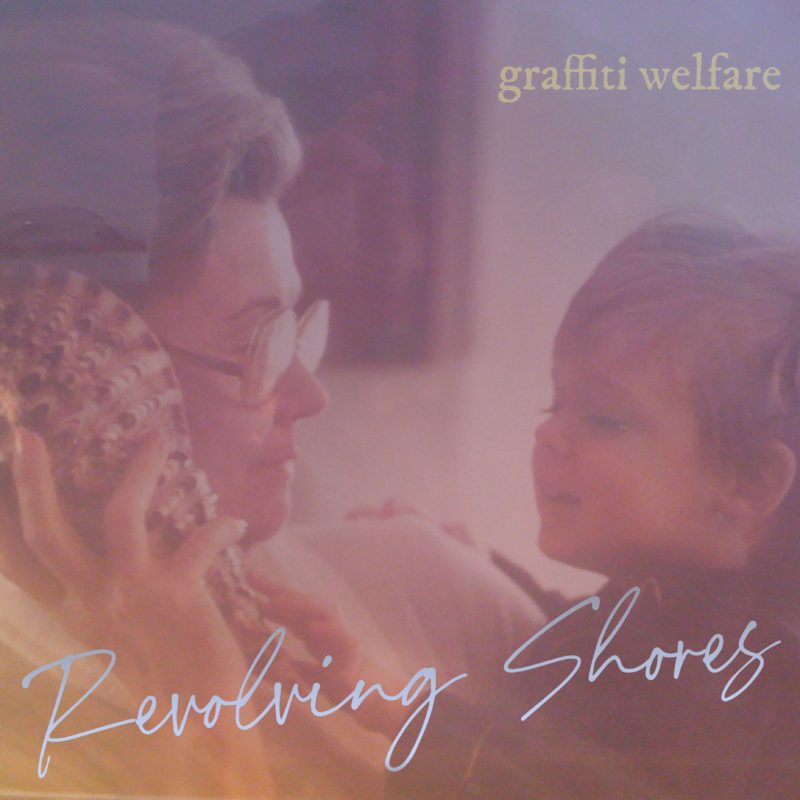
As she stares into her laces, a bee buzzes and hums in her ear
is that a tune she remembers? or is it one she should?
Grampa used to ask her what she expected from music
whether she thought it would fulfill her
now as she waits for her ride, she wonders
if the color is enough to keep her going
whether things will change for the better or
if the volume will continue to dim.
Graffiti Warfare is the nom de guerre of Denver’s George Lattimore. Revolving Shores is his second album under that name. It’s an outright embrace of nostalgia, but broader in emotional scope than the work of some of his contemporaries. Nostalgia indeed, but not just for stoned teenage angst and romance, also for sharp-eyed grandparents, kite flying, and plastic cutlery.
From the opening song, “To Be It,” which features spoken word recordings by mid-twentieth century perennialist, Alan Watts, the album feels like it must have been a really personal process for Lattimore. I was quick to want to characterize the record as intimate and wooly, and at many moments, it is that. It’s certainly interpretive; some of its references feel like they must be Lattimore’s alone, or akin to the kinds of inside jokes siblings keep–almost indecipherable, but nonetheless totally charming to outsiders. It’s a largely instrumental album, only making sparse use of vocals on most songs, with greater focus on synthesis, pillowy drums, and pedal work. But where some of Lattimore’s nostalgia-seeking colleagues may opt to dive headfirst into fuzz, tape warble, and binaural synth washes, most of Revolving Shores maintains a sense of earnest clearheadedness, at times even bordering on the piercing.
What might seem at first like a weedy and cozy lay in grass (see early standouts like “Just Follow” or “DejaBlue“) pretty quickly turns into more of a healthy not-quite-micro-dose on a brisk autumn beach. There’s plenty of flirting with melancholia, but also an apparent attempt to tackle concrete family anxieties, grief, and insomnia. I’ll admit I’m usually more of a weedy lay in the grass type, but the album is probably strongest when it embraces the colder and more frenetic — the collage slap bass of “Volume” or the stop/start-synthesized-shrill meets soft underbelly of the album’s closers “Missing the War” and “Seashell.”
Revolving Shores is Lattimore’s own personal moment on a cold bright day in wet sand, but most listeners will find themselves feeling welcome to join him.
The album is out now for streaming on all major outlets.
Graffiti Warfare – “Just Follow” (sc)
Graffiti Warfare – “Volume” (sc)
Graffiti Warfare – “Seashell” (sc)
(Expand)
This review was written in support of the artist’s promotional campaign.
Mailbox: RIII – Kick

Bombastic steppy heavy bass from Tokyo’s RIII (those are three i’s). “Kick” is the B2 off of RIII’s newest Vibesy EP, out now on Aranck Collective. The other track I’m including here is from Aranck Collective’s 2.0 compilation that was released this past June; “Howl” is dubbier, and reminds me of the kind of quasi-DMZ we used to push hard on Palms Out. Those were the days. Glad to know people are still pursuing this sound, and doing it well.
RIII – “Kick”
RIII – “Howl” (sc)
Lemfreck – After
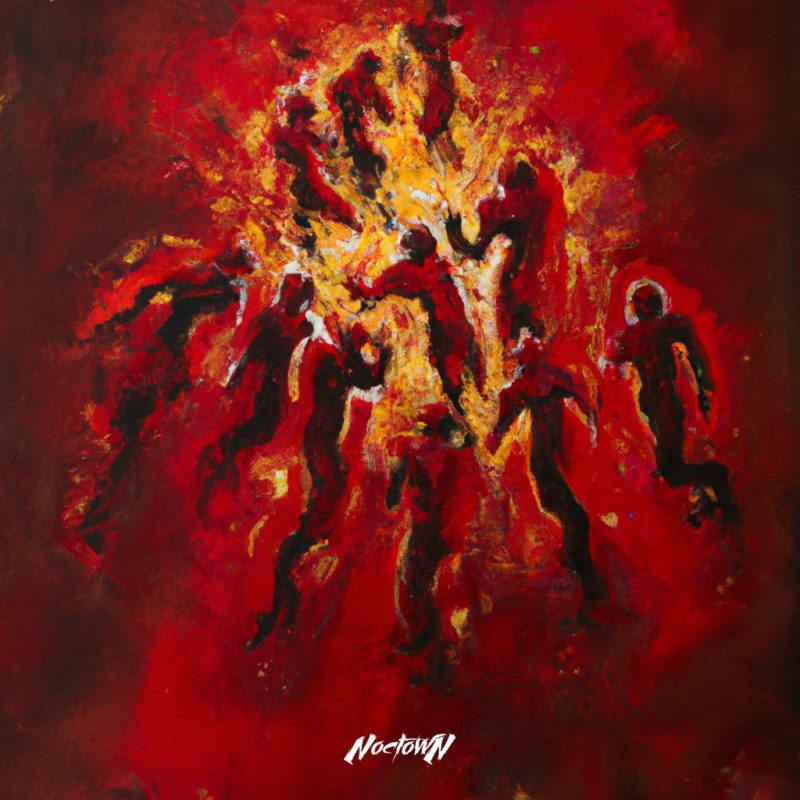
Caught me falling, that’s not fair
I’ll move on, just tell me where
Lemfreck (stylized as L E M F R E C K, real name Lemarl Freckleton) is a welsh singer, rapper, and producer from the city of Newport. His most recent album, Blood, Sweat, & Fears is really lovely. It might be fair to characterize Lemfreck’s sound as somewhere between a Sampha croon and the uniformly international modern sound that pervades rap and rnb these days, but all with a slightly naive underproduced quality, and a pinch of welsh grey-sky gloom. That might be too convoluted a description for music that doesn’t need to be overcomplicated to get its point across. Notwithstanding a few harder rap tunes, the album is largely romantic, wistful, and yearning music. I’m feeling that way myself these days, so this hits the spot. No bandcamp for this one, so find it on streaming.
I should also mention, Lemfreck recently fronted the BBC documentary program Black Music Wales, which explores the often-overlooked history of welsh Black music, and introduces some of the new generation (of which he is a part). It sounds totally fascinating, but unfortunately I can’t overcome the geo-blocking to get to watch it. If you’re in the UK, or you’ve got a better VPN than I, give it a watch.
Lemfreck – After (sc)
Lemfreck – “Play with Silver” (sc)
Lemfreck – “Death by Nyash” ft. Manga Saint Hilare (sc)
Mailbox: Jasce – Send
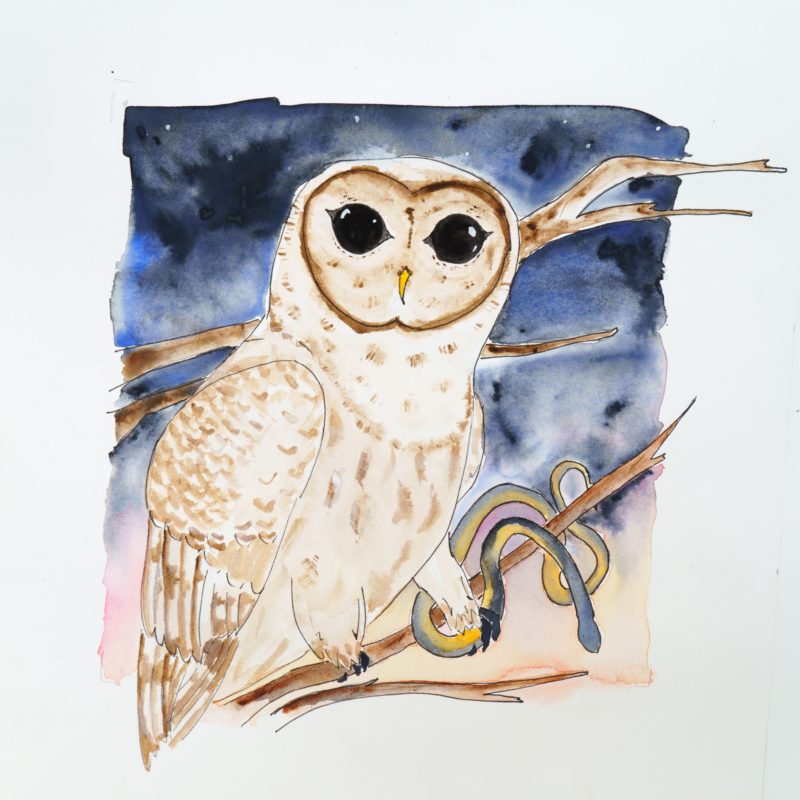
JASCE (pronounced like the first syllable in the name Jason) is a producer, vocalist, and violinist based in Philly. She sent me the attached eerie number, and I’m into it. Sort of a little like if Tori Amos on one of her breathier days went to a rave full of goths and dnb kids. Maybe that’s a little reductive. Based on a quick scan through her catalog, JASCE is a really talented producer, and clearly her background as an instrumentalist brings the sort of musicality that’s not infrequently lacking in bass music. I respect her commitment to merging proper singer-songwriter stuff with monstrous bass. Some of her songs go a little too far into mainline dnb territory for my tastes, but on this one, the percussion is super sharp, and that bassline is just really well contained and tense.
Stream this at any of the usual places, or grab it on bandcamp.
JASCE – “Send” (sc)
Mumdance – Jazz Excursion

Somewhere in the middle of last year, in preparation for his imminent return to music after four years away, and in recognition of his third year clean and sober, Jack Adams shared a methodically prepared archive of over 315 hours of his previous work–mixes, productions, and other work. Then, at the end of the year, he released two new songs. This is the B-side from his triumphant return record. Really happy for this guy.
This year, he hasn’t released any new discrete productions that I’m aware of, but he did put out a cassette mixtape that marries the use of a pair of decks and his modular system–using prototype synchronization hardware presumably built by ALM Busy Circuits–as part of that company’s ten year anniversary celebrations. I hope we get to hear more from him soon.
Grab it on bandcamp or stream it all over.
Mumdance – “Jazz Excursion” (sc)
Schlachthofbronx – Cruise
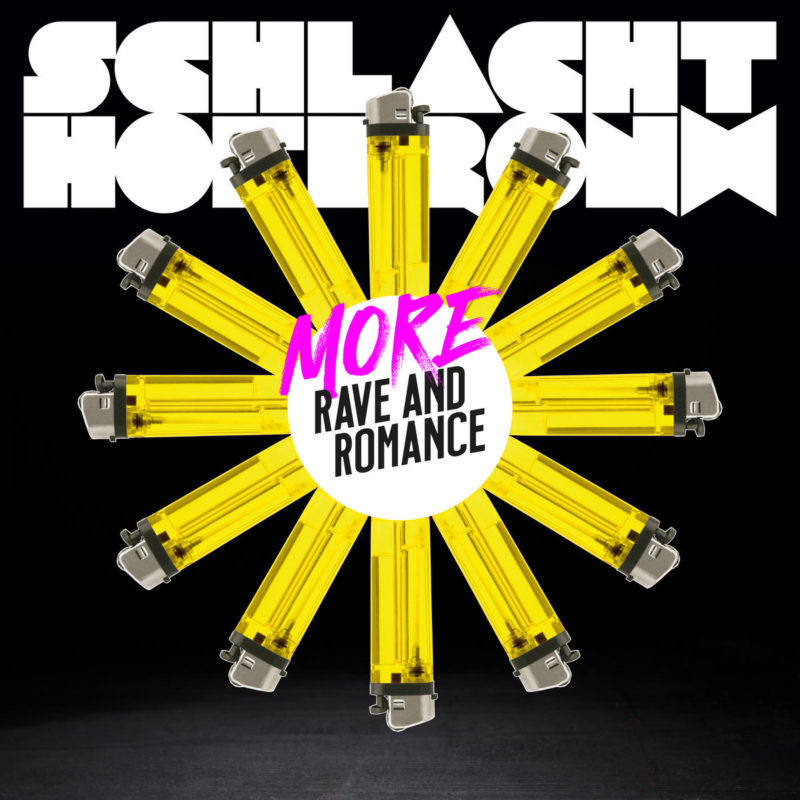
These guys were mainstays on Palms Out during the blog’s heyday, and I gigged with them a few times when I was living in Copenhagen in the late aughts. Pretty sure I was involved in recording something or other with them at the old Yo Fok studios (where I lived in the attic, shout out my old pal Åsmund/Copyflex for that ridiculous hookup, notwithstanding the pneumoniatic mold). But my memories of those years are disturbingly blurry.
From their base in Munich, Schlachthofbronx were always cranking out that particular German take on global bass music. A touch of Berlin techno, a touch of dancehall, a touch of Modeselektory-glitch hop — never content with fitting squarely in any of those categories.
I was so pleased to discover they’re still doing their thing, and they have a new record out: More Rave and Romance. The album features some legendary vocalists, including Flowdan, Warrior Queen, Kbh’s own Lady Smita (big up), and even a posthumous feature from the late Nicky Da B, among others. As strong as the vocal showings are on the album, I think my pick of the litter is an instrumental track, “Cruise.”
I’ve selected a few for you below, but grab the album on bandcamp, or stream wherever you do that sort of thing.
Schlachthofbronx – “Tempting ft. Warrior Queen
Schlachthofbronx – “Come In” ft. Lady Smita
Schlachthofbronx – “Cruise”
Mailbox: Andrew Potterton – Break Out Park

I’m such a sucker for a good Burial homage. I’ve said it before, and I’ll say it again, the dude developed a genre and no one who works in the space can avoid the reference. But I say just own it.
Leeds-based music educator Andrew Potterton does that. He seems like the type of artist who just loves figuring out a genre. A quick scan through his soundcloud reveals a new genre almost every tune. It ranges from dusty house to mainline dnb to pure ambient synthscapes to rave to trap to phonk to lofi beats to study to–to just about everything else. Some might say that indicates a lack of focus, but from a pure skill standpoint, I find the versatility impressive, especially because it’s all pretty well executed. And I think putting it out under your government name indicates a real lack of pretension, which I totally respect. It makes sense coming from a music teacher. You’ve got to be able to approach lots of genres to effectively teach electronic music composition to students with wildly varied tastes. Plus, kids are brutal, so being pretentious isn’t going to get you far.
No bandcamp for Andrew, unfortunately, but check his soundcloud and spotify profiles.
Andrew Potterton – “Break Out Park” (sc)
Andrew Potterton – “Hope Restored Again” (sc)
Mailbox: Subfiction – twerkin’ aphex
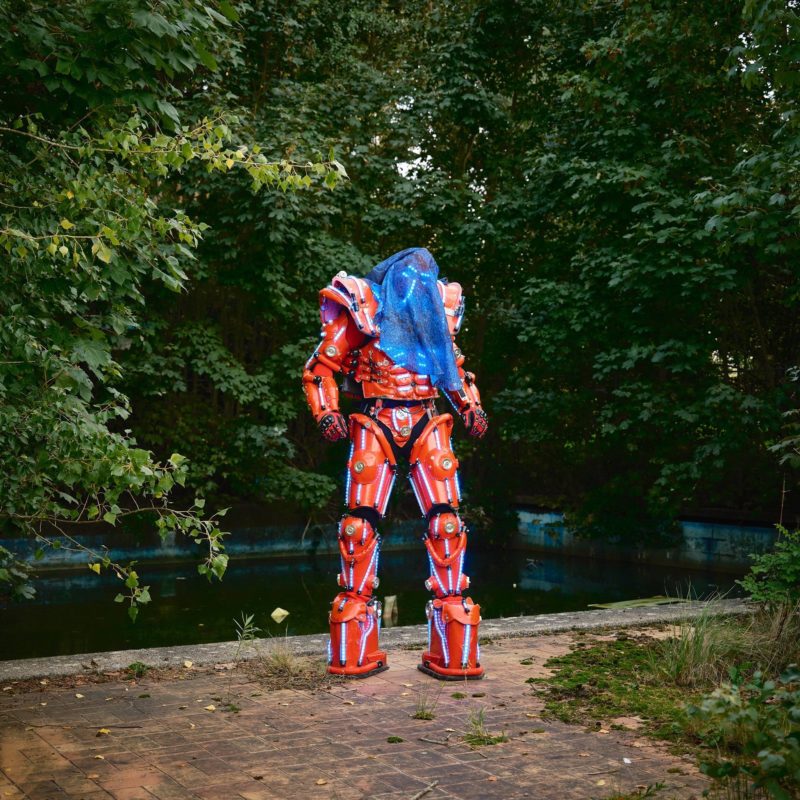
Subfiction is one of those artists who wears a mask. A lot of the time, this makes me skeptical. But who knows, maybe the guy behind the mask has a job they need to protect, or maybe they’re the son of a couple of mysterious masked super villains, and they’re just keeping the family tradition alive. All credit due, the mask in question is kinda cool; it’s less of a mask, really, and more of a collection of lacey scarves, sometimes worn in conjunction with LEDs. In the case of the cover art above, I’d say the rest of the fit lends itself to my super villain theory.
In any case, the only other thing I know about the artist is that they’re operating out of the Netherlands (ideally in a secret mountain lair, but Holland doesn’t have any mountains). The music wears its influence on its [robot villain] sleeve, and track titles like “twerkin’ aphex” hammer the point home. But is that a bad thing? I don’t really think so. The aforementioned song is frenetic and NRG-etic and delivers on its title. The other featured track is no less ambitiously titled “killa4dafloor” — manifest what you want out of a track, I suppose! It’s a nice and simple breakbeat track with acidic 303s and ravey sampled vox. Not exactly groundbreaking, but still a solid shot at its stated purpose. Floors often thrive with familiar references as much or more than they do with newly broken ground.
Check the EP on bandcamp, or stream it wherever you listen these days.
Subfiction – “twerkin’ aphex” (sc)
Subfiction – “killa4dafloor” (sc)
Y U QT – Drowned
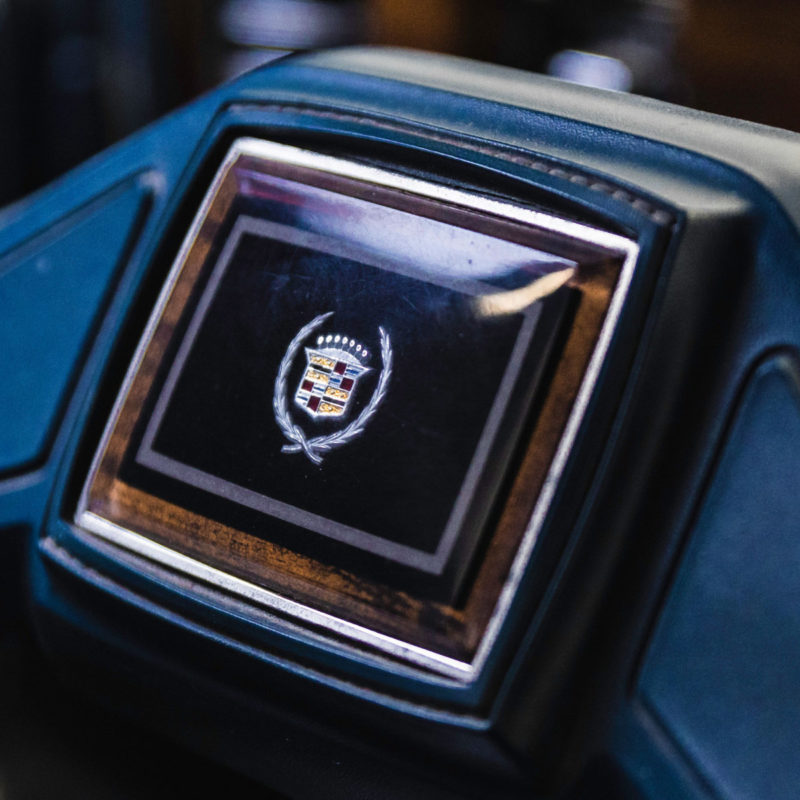
Throwback Leicester blog bang0rz. This sound still scratches a certain itch, doesn’t it?
Grab it on bandcamp or stream it to your heart’s content.
Y U QT – “Drowned” (sc)

